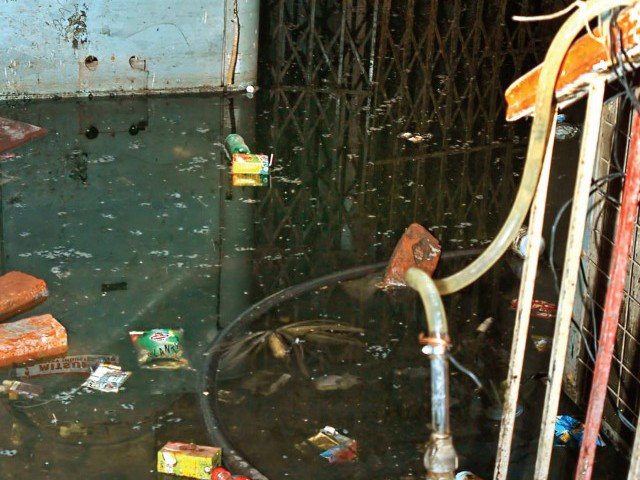
This is polluting the streams in the federal capital and emanating unpleasant odours throughout the city, besides turning brooks into breeding grounds for mosquitoes.
The city has about 26 small and large streams, which take hill torrents/rainwater and pass through different residential sectors. They finally converge into two main streams when leaving Islamabad.
“Due to discharge of domestic waste and leakage of municipal sewers, these streams are highly polluted and give out a foul odour. They also end up becoming breeding places for mosquitoes,” says a Pakistan Environment Protection Agency (Pak-EPA) official, requesting anonymity.
In the initial master plan of Islamabad, the natural streams were left open with large spaces on both sides to allow them to flow smoothly along their natural courses.
Later on, CDA started to encroach and narrow them down to create space for residential and commercial plots. There has been a mushroom growth in Sector E-11 in the recent past and streams were badly tapered by CDA.
“Sometimes sewerage lines are choked due to overpopulation. Capital Development Authority (CDA) and Islamabad Metropolitan Corporation (IMC) maintenance workers rip apart pipelines and let the sewage water directly into the natural streams and nullahs instead of cleaning,“ Institute of Architects Pakistan (IAP) Vice President Haroonur Rasheed told The Express Tribune.
“If you go upward, you will find the water of these natural streams is crystal clear. However, they are filled with dirt and a foul smell lower down,” Rashid says. He adds that at some spots, sewage water flows directly into natural streams thanks to broken lines. “It becomes worse at night.”
He points out that there are many reasons for the flow of sewage into natural streams. In the initial master plan, rainwater and sewage drains were laid separately. Later on, some CDA inspectors turned a blind eye towards monitoring and enforcing this mandatory regulation and gave completion certificate to house owners in return for a bribe,” he claims.
He continued that such actions of inspectors encouraged people not to lay separate lines for sewage and rainwater. “To save the meagre cost of pipelines, they started discharging sewage into rain drains which ultimately flowed into natural streams.”
Now, the sewage of a large number of housing units is being discharged into streams. “There is a need to keep natural streams in their original state and avoid creating plots by contracting nullahs,” Rashid stresses.
There was only one sewage treatment plant installed in I-9 under the Public Sector Development Programme (PSDP) which was funded by French Government in 2009. However, that too stopped working.
“Due to faulty equipment, coupled with insufficient inflow, we had to close the plant recently,” a CDA source says. He continued that it only received two million gallons daily (MGD) against a capacity of treating 17 MGDs.
There is no treatment plant in Sector E-11 and the sewage generated by residents is also directly drained into natural streams. Needlessly to say, these are spreading different diseases and polluting underground water in downstream areas. The source says compact STPs can be installed at different sectors instead of relying on an integrated one.
A few people reside in large size plots, while small plots in the federal capital have more occupants.
Published in The Express Tribune, November 10th, 2016.
1725354252-0/Untitled-design-(5)1725354252-0-405x300.webp)



1721376111-0/BeFunky-collage-(15)1721376111-0-165x106.webp)
1725355686-0/Untitled-design-(32)1725355686-0-270x192.webp)


1725352563-0/Untitled-design-(8)1725352563-0-270x192.webp)
1725352489-0/Untitled-design-(35)1725352489-0-270x192.webp)
1725351242-0/Untitled-design-(7)1725351242-0-270x192.webp)

1725083820-0/Untitled-design-(24)1725083820-0-270x192.webp)










COMMENTS
Comments are moderated and generally will be posted if they are on-topic and not abusive.
For more information, please see our Comments FAQ